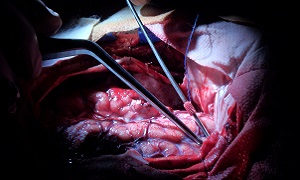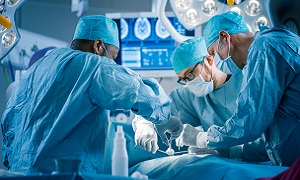Deep Brain Stimulation
Deep brain stimulation is an elective surgical procedure, which involves implanting electrodes in certain areas of the brain. These electrodes or leads help in generating electrical impulses for controlling any abnormal activity in the brain. The electrical impulses can also adjust for any chemical imbalance within the brain which can lead to various conditions. A programmable generator resembling a pacemaker placed under the skin in the upper chest controls the stimulation of brain areas.
Deep brain stimulation has been approved for treating several conditions which include dystonia, epilepsy, essential tremor, Parkinson’s disease, and obsessive-compulsive disorder. Currently, it is also being studied as a potential treatment for addiction, chronic pain, cluster headache, dementia, depression, stroke recovery, multiple sclerosis, Huntington’s disease, Tourette syndrome as well as traumatic brain injury.
Purpose
Deep brain stimulation is an established treatment for people who are suffering from movement disorders, which can include essential tremor. Parkinson’s disease and dystonia, and psychiatric conditions such as OCD are few other ailments which can be treated by this procedure.
This treatment is reserved for the people who are unable to control their symptoms with the use of medications.
Preparation
Since deep brain stimulation is a serious as well as a risky procedure you need to weigh the pros and cons carefully, along with your doctor, even if you are considered eligible for the procedure.
Before the surgery, you will require a few medical tests for making sure that deep brain stimulation is safe and appropriate for you. You will also require brain-imaging studies such as an MRI, before your surgery to map the areas of your brain to implant the electrodes.
Procedure
The surgery for deep brain stimulation has two portions.
Brain surgery
For the brain surgery portion, the surgery team will fit you with a special head frame so that your head is still during the procedure. Then, team members will use magnetic resonance imaging (MRI) in order to map your brain. This will allow them to identify the areas in your brain where they will need to place the electrodes.
The surgery can be performed under general anesthesia or local anesthesia. If local anesthesia is used, it will numb your scalp before the procedure. However, you will not need an anesthetic inside your brain as it has no pain receptors.
Your surgeon will be implanting a thin wire lead with a number of contacts or electrodes at the tips into a specific area in your brain. He/she might also implant one lead into each side of your brain. Then a wire will run under your skin to a pulse generator which will be implanted near your collarbone.
During the surgery, your brain will need to be closely monitored by the surgeon and the neurologist, to help ensure correct electrode placement.
Chest wall surgery
During the second portion of your surgery, the surgeon will implant the part of the device containing the batteries under your chest’s skin, near the collarbone. During this procedure, general anesthesia will be used. Wires from your brain electrodes will be placed under your skin. They will then be guided down to the battery-operated pulse generator. This generator will be programmed to send continuous electrical pulses to the brain. You will be controlling the generator and you are also able to turn it off using a remote control.
After the procedure
The pulse generator in your chest will be activated in your doctor’s office a few weeks after your surgery takes place. Using a special remote control, the doctor will easily be able to program your pulse generator from outside your body. The amount of stimulation will then be customized to match your condition. Finding the optimal setting can take a few hours.
Depending on your condition, your doctor will advise you whether you need stimulation constantly running 24 hours a day, or you need to turn off the pulse generator at night before sleeping. The special remote control which you will receive from your doctor can help you turn the stimulation on and off. Your doctor may also program the pulse generator to let you make any minor adjustments at home.
Your generator’s battery life can vary with usage and settings. When your battery needs replacement, your surgeon will replace the generator during an outpatient procedure.
It is important to note that this procedure will not be curing your disease, but it can provide help in lessening your symptoms to a great extent. If this procedure works, your symptoms will be improving significantly. However they don’t go away completely and in some cases, you might still need medications for certain conditions. It is also noteworthy that this procedure isn’t successful for anyone. Before your surgery, it is important to talk with your doctor regarding the benefits, risks, and expectations.
Advantages
This procedure can be performed on either side of your brain, depending on your symptoms. For each patient’s clinical status, the effects can be customized individually for each patient’s clinical status.
The device can help to provide continuous symptom control 24 hours a day. If one sees side effects, stimulation settings can be modified to diminish them.
Risks
Deep brain stimulation is a minimally invasive surgery and is generally considered safe. However, like any other surgery, it has a risk of a few complications.
The first surgery involves creating small holes in the skull for implanting the electrodes, and the second surgery involves implanting the device with batteries under the skin in the chest.
Complications of surgery might include:
- Misplacement of lead
- Stroke
- Infection
- Bleeding in the brain
- Breathing problems
- Heart problems
- Seizure
- Nausea
Side effects that are associated with deep brain stimulation include seizure, infection, headache, difficulty in concentration, temporary pain and swelling at the implantation site, etc.
The device will be turned on a few weeks after your surgery, and the process of finding the best settings will begin. Though some of the settings can cause side effects, most of them can improve with further adjustment of the device.



